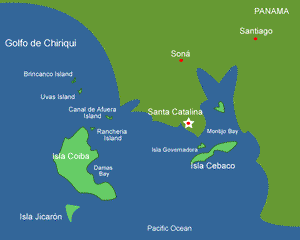 (Prensa.com) The Smithsonian Tropical Research Institute announced yesterday, Thursday, that in the Coiba National Park (CNP), which includes the islands of Coiba and Ranchería or Coibita among others, whale sharks and white tip sharks have been spotted.
(Prensa.com) The Smithsonian Tropical Research Institute announced yesterday, Thursday, that in the Coiba National Park (CNP), which includes the islands of Coiba and Ranchería or Coibita among others, whale sharks and white tip sharks have been spotted.
Marine biologist Héctor Guzmán, who studies the migration of hammerhead sharks, whale sharks, and white tip sharks in the CNP, has spotted 15 whale sharks and 74 white tip sharks with satellite radio transmitters.
According to a press release from the institute, Guzmán’s studies willprovide information about how far the sharks travel, how long they spend at the sites, and at what depth and temperature.
A significant decline in hammerhead sharks in recent years has made it almost impossible to find and mark adult sharks, and the younger ones have fallen victim to fishing near the coast of Panama, according to the press release.
“At CNP, we are starting to see some species of sharks that we have not seen for a long time, like Galapagos and silky sharks; two species in the category of Almost Endangered by IUCN,” said Guzmán.
“This is an indication that there are more species of predators available and that the ecosystem is being restored gradually in areas that had been over-fished,” he said.
According to the biologist’s data, the white tip shark population is increasing.
By following the movement of larger predators, such as sharks both outside and inside the reserve of CNP, the researchers will know whether the levels of protection will be sufficient to maintain a healthy ecosystem that serves as a basis for fish breeding and the conservation of natural biodiversity for future generations.
Marine reserves like the CNP protect the larger predators so that they maintain healthy marine communities.